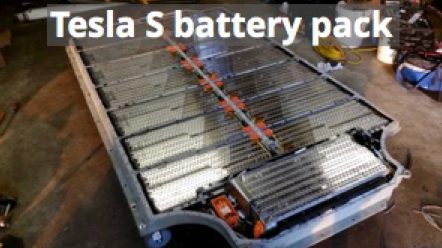About Electric Boats, Part 7: Battery Cells, Modules and Packs

The way to get greater voltage is to connect more batteries. But the word ‘battery’ is imprecise. We use it to mean everything from something in a hearing aid to something in an electric vehicle.
Proper Terminology
To be more precise, the lemon is a battery cell. Battery cells are connected together to make modules and modules are connected together to make battery packs. Even some of the batteries you use at home, like a 9V battery, are technically battery modules constructed of six individual 1.5V battery cells.

Here’s a crazy example of how this works — the world’s largest lemon battery — that demonstrates how a battery pack is created to increase voltage.

On a more practical level, the battery for a Tesla 3 (or any other electric vehicle) is not much different. It uses lithium-ion cells, each a little bigger in dimension than AA batteries. Each cell can generate 3.7 Volts and there are 2,976 of them arranged in 96 groups of 31 to create the Tesla 3 battery pack of 350 volts. Energy storage capacity of the pack is 80 kWh. You can see the cells, modules and overall pack in the photo below.

Strength in Numbers
The Tesla battery (and all batteries) use two different ways of connecting batteries to achieve both higher voltage and higher kiloWatt hours.
If battery cells or modules are connected in series, the voltage is increased, but the energy storage is not increased.
If they are connected in parallel, the opposite happens — energy storage capacity is increased but the voltage stays the same.
In the case of a large battery like those used in electric cars and larger electric boat systems, the work is already done for you. For smaller motors, though, you can do this yourself. Two 48V batteries (for instance) can be put together in series to drive a larger motor. Or, they can be put together in parallel to double the range of your boat.
IMPORTANT NOTE: This is not true for all electric motors and batteries — do NOT do this without consulting the manufacturers.
Different Cells: Cylinders, Pouches, Prismatic

One final thing about how batteries are built. For lithium batteries there are three basic types of cells — cylindrical, pouch, and prismatic.
Cylindrical cells are similar to AA batteries. Prismatic cells are contained in a rectangular can. Pouch cells are small pouches.
Each cell type is constructed in a different way and has advantages and disadvantages for the manufacturer and user. These are mainly related to efficiency, weight and cost — in the manufacturing of the cell itself and in connecting them to make modules and packs.